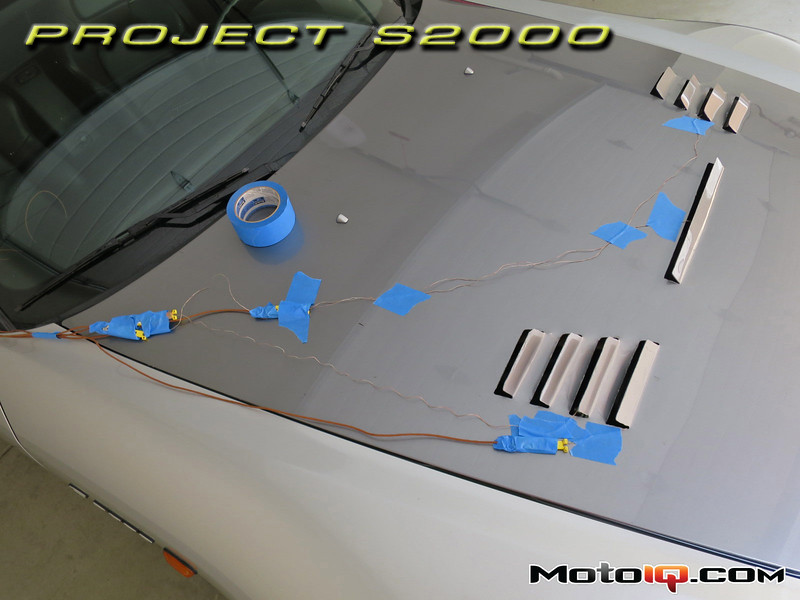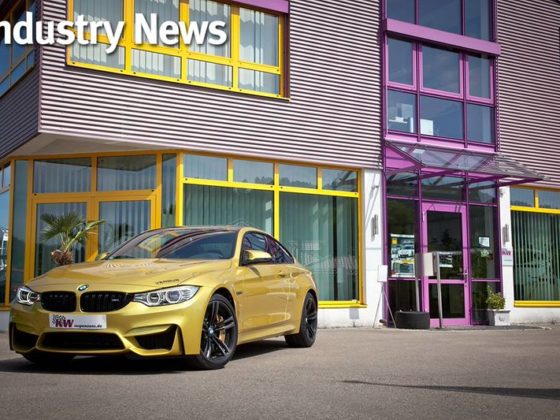,
 On the driver’s side of the engine bay, it’s a pretty clear shot for the hot air coming off the radiator to make it to the hood vent; you can see the radiator and driver’s side radiator fan. Sure, there are some hoses in the way, but not like a full air box blocking the path. The air box also does not extend as far over to the side of the engine bay as it does on the passenger side. So I believe much of the hot air coming off the oil cooler is making its way over to the driver’s side hood vent.
On the driver’s side of the engine bay, it’s a pretty clear shot for the hot air coming off the radiator to make it to the hood vent; you can see the radiator and driver’s side radiator fan. Sure, there are some hoses in the way, but not like a full air box blocking the path. The air box also does not extend as far over to the side of the engine bay as it does on the passenger side. So I believe much of the hot air coming off the oil cooler is making its way over to the driver’s side hood vent.
 You may remember these images from when we played around with a Fluke Thermal Imager. Well, it pretty clearly shows the driver’s side of the hood is hotter than the passenger side.
You may remember these images from when we played around with a Fluke Thermal Imager. Well, it pretty clearly shows the driver’s side of the hood is hotter than the passenger side.There is one other contributing factor to the air going out the passenger side vent, though I think it only accounts for a part of the air temperature difference between the passenger side and the center and driver’s side vents; there is probably some air leakage from my NACA duct around the snorkel of the air box, so some of that cool air is probably mixing with some hot air coming off the heat exchangers. The fact the temperature of the air going the passenger side vent is 15 deg F than ambient shows heat is still being extracted. Maybe I’ll try to seal up the duct around the snorkel better.
 So I was going to design my own drop-in vents for where I currently bent up the sheet metal, but then I came across these S2000 specific louvers from VRaptor Speedworks. Maybe I’ll snag a set as it sure does save me a lot of time and hassle! For you Miata guys, they also have hood louvers.
So I was going to design my own drop-in vents for where I currently bent up the sheet metal, but then I came across these S2000 specific louvers from VRaptor Speedworks. Maybe I’ll snag a set as it sure does save me a lot of time and hassle! For you Miata guys, they also have hood louvers.So there you have it, some air temperature numbers to go along with the coolant and oil temperature numbers. The air temperature numbers coming off the radiator backed up my theory on the effectiveness of placing the oil cooler behind the radiator. We did learn some interesting stuff with regards to the airflow through the engine bay after measuring the air temperatures coming out of the hood vents. Of course, we also proved more directly that the hood vents worked as the track testing was not performed under identical conditions.
In other news, a quick update on the other parts of Project S2000.
 This is the left front tire. It’s pretty much done. There is a nice benefit of the tire being nearly a slick, it is much quieter. When the tire was new, it was relatively loud due to the large tread blocks.
This is the left front tire. It’s pretty much done. There is a nice benefit of the tire being nearly a slick, it is much quieter. When the tire was new, it was relatively loud due to the large tread blocks. This is the left rear tire which is even more of a slick. And it’s really done as I have a nail in it. Well, that explains why the tire was down a couple psi compared to the rest when I checked the pressures recently.
This is the left rear tire which is even more of a slick. And it’s really done as I have a nail in it. Well, that explains why the tire was down a couple psi compared to the rest when I checked the pressures recently.Notice that the wear across the tires is pretty even. If you recall, during my latest round of alignment tweaks when I installed the Nitto NT01s, I went from 3/16” toe-in at the rear to 1/16” toe-in. Wow… that was three years ago! In that time, the tires went through about 4 dozen auto-x runs, 4 track days, and 5000 miles or so of driving. Time for another set.
 The previous tires, Bridgestone Potenza RE-11s died a premature death due to uneven wear from the 3/16” toe-in on the rear.
The previous tires, Bridgestone Potenza RE-11s died a premature death due to uneven wear from the 3/16” toe-in on the rear.I was at K1 Speed a while back and ran into MotoIQ reader Alex R. He also owns an S2000 and I happened to have Project S2000 out that day. I took him for a spin and he commented immediately on two things: the great damping of the KW Clubsports and how smooth the BlackTrax Performance/Kingpin Machine spherical bearing suspension kit worked. Of course, I also romped on the car a bit taking it to redline a few times to demonstrate the smoother torque curve due to the Hondata KPro. Also of obvious difference from a stock car is the feedback level from the Hasport engine mounts.


 Here are a few pictures showing the spherical bearings after a thousand miles or so of street driving, track time, and a bit of canyon carving.
Here are a few pictures showing the spherical bearings after a thousand miles or so of street driving, track time, and a bit of canyon carving.I have not done any sort of maintenance to the spherical bearings. I’ve washed the car a couple times and got caught driving in some light rain a couple times. Otherwise, the pictures show just how they are. They are still awesome and I highly recommend them as they really button down the car eliminating the float in stock bushings. The spherical bearings are one of the mods that really transform how the car behaves, especially at the limit. As S2000s get up there in age and mileage, you can be sure the stock bushings are trashed.
What’s next? A new set of tires first! And I’m still slowly working my way towards the ideological street/track car balance of a Porsche GT3RS. So until the next round of mods, I’ll continue to have fun romping on the car whenever I get the chance.



